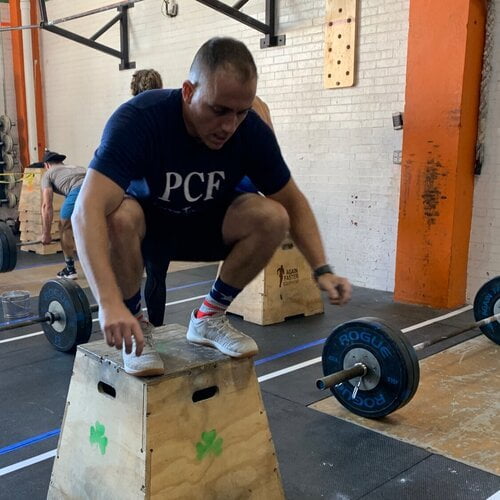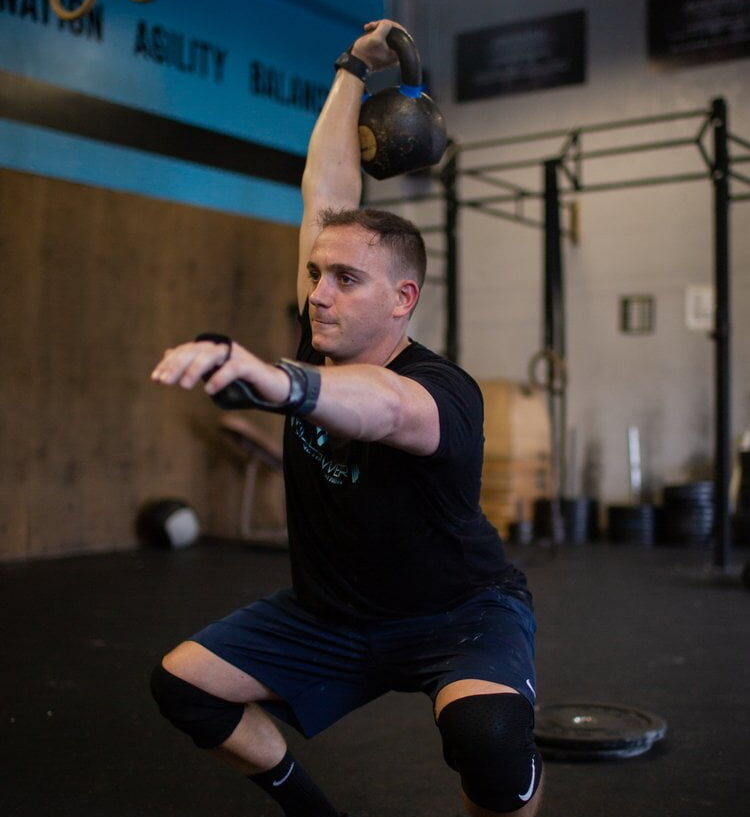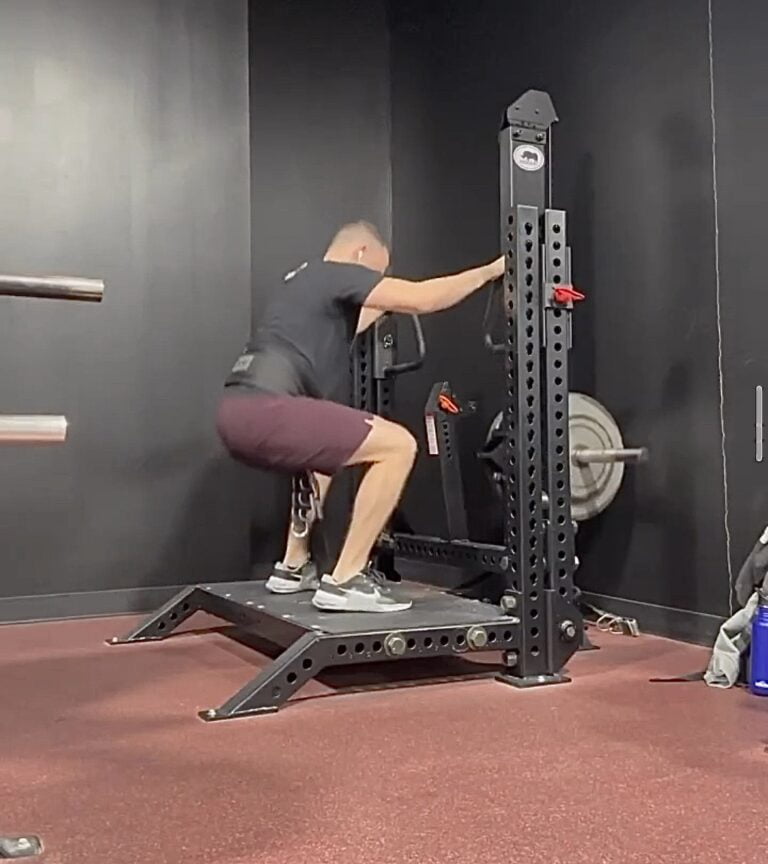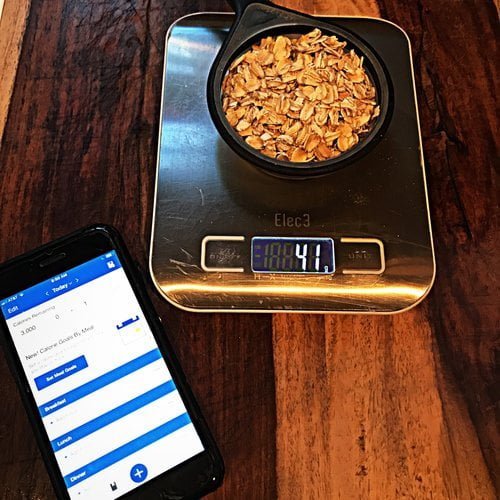Using Maximum Aerobic Speed Concepts To Improve In The Sport of CrossFit
The name of the game in CrossFit is work capacity. How much work can you accomplish in the shortest amount of time? Average pace and aerobic capacity are essential to maximize the work we can achieve in a given period and a priority for my clients inside my 1:1 Pain-Free Performance Program.
If you have a 10-minute workout for as many rounds as possible (AMRAP) and you are the fastest one out of the gate for the first 3-5 minutes, but then for the second half of that workout, your pace drops to half of what it was initially, your average pace for the 10 minutes plummets. It is likely in an exponential fashion as you continue to try and push the pace beyond what you are recovering from aerobically between sets and movements.
I think it would be obvious to say if you then compare this score to a score of another athlete with the same level of conditioning, ability, or anthropometrics, who used a better pacing strategy and maintained a higher average pace throughout the whole ten minutes, athlete number two likely will have achieved more reps or rounds.
Athlete number two scored higher because their pace per minute remained stable, while yours did not. The concept of moving at the fastest pace that can be maintained is termed an athlete’s Maximum Aerobic Speed.
What is Maximum Aerobic Speed?
Maximal Aerobic Speed (MAS) is the slowest pace at which an athlete can achieve maximal oxygen uptake or VO2 max. In other words, it is the fastest pace an athlete can reach and maintain for a period of exercise based on a specific time window. MAS depends on an athlete’s ability to deliver blood and oxygen to the working muscles to produce energy at a rate that maintains the athlete’s effort. Anything above an athlete’s MAS is the Anaerobic Reserve (AR).
In this reserve, the athlete can achieve paces much faster than what is maintainable; however, in this zone, they will be moving at a pace that can only be utilized for a short period until their anaerobic systems fatigue and their pace drops below MAS to recover, which could be better for CrossFit.
This is similar to the scenario above between you and athlete 2. You were operating within the anaerobic reserve, so initially, you had a pace faster than athlete 2. However, you could not maintain that effort at some point, and your pace dropped significantly below that of athlete 2, who stayed at their MAS. This scenario is often seen in beginner-level CrossFitters, myself included.
If you look at the best in the sport, they only look like they are suffering mid-workout if the time domain permits them to. They will operate at their fastest maintainable pace until they reach a point in the workout where rising above MAS into their AR is beneficial as a last-minute kick to the finish. Their maintainable pace is faster than the average person.
Testing Maximum Aerobic Speed
The concept of MAS is a familiar one. Many coaches before me have perfected this training concept, particularly in track and field. A training program for field sports like track or cross country running does not include daily max effort training as some CrossFit programs do. Programs that emphasize high-intensity efforts and leave the athlete on their back in a pool of sweat on the brink of puking out their lunch.
Traditional Track and Field programs include a period of baseline testing and then phases of training that force the athlete to operate at their MAS for a set number of distances or time intervals and then, over time, force them to increase their maintainable pace or extend their initial MAS for a longer period as their aerobic fitness improves.
In this way, conditioning can be monitored and progressed appropriately without the need for a heart rate monitor or training zones, much like strength training typically is.
Field Tests For Testing Maximum Aerobic Speed
Testing your maximum aerobic speed is crucial for developing the best type of training for you, and choosing the proper testing protocol where the learning curve is kept to a minimum and technique is a nonfactor is critical.
There are several methods to consider when assessing your aerobic power. Each technique offers unique insights into your fitness levels and can effectively guide your training. From traditional treadmill tests to cycle ergometry and beyond, the number of methods available might leave you wondering which one is right for you.
The following list will explore various field tests to measure your maximum aerobic speed. Understanding these testing protocols will empower you to tailor your training regimen to your needs and goals. Below are different ways you can evaluate the capacity of your aerobic energy system.
Montreal Beep Test:
- Description: The 20m Shuttle Run Test involves running back and forth over a 20-meter distance at increasing speeds signaled by beeps. The pace accelerates at set intervals, challenging participants to sustain their effort until exhaustion.
Multistage Shuttle Beep Test:
- Description: Similar to the Montreal Beep Test, participants’ shuttle runs between two points at increasing speeds following auditory cues. The test progresses through stages with shorter time intervals, increasing the intensity.
YoYo IR1 Test:
- Description: The YoYo Intermittent Recovery Test Level 1 (YoYo IR1) involves repeated 20-meter shuttle runs with brief active recovery. The speed increases progressively, and participants continue until they can no longer maintain the pace.
Time Trials with Set Times:
- Description: Participants complete a max distance test within a pre-determined time frame, such as 5 minutes. This could involve running, cycling, or rowing. This method measures an individual’s distance in a specific time domain, reflecting their maximal aerobic speed.
Set Distances (5-7 minutes to Complete):
- Description: Athletes cover a specific distance (e.g., 1.5 miles) within a time range of 5 to 7 minutes. How long the distance takes them can be used to calculate the slowest speed the athlete will be working at their maximum oxygen uptake or VO2 max.
Applying Max Aerobic Speed To CrossFit
To apply MAS training concepts to your training program as a CrossFit, like endurance athletes in Track and Field, you must start with baseline testing. Baseline testing will allow you to measure your progress and ensure the program works.
The best baseline test is going to represent the demands of the sport. A coach can help you develop a battery of mixed-modal testing. Still, the best test to compare yourself to is the most precious open workouts you have completed.
These tests are written by the organization testing the sport. They best represent the abilities that athletes must improve upon. So unless you’re a Games Athlete using those workouts from the Games to test performance improvements, I would use the open workouts to dictate your training methods.
The issue with applying MAS to CrossFit is the number of modalities, time domains, and combinations of movements in the sport. In this light, testing for MAS for CrossFit will not be the same as for a sport dependent on mono-structural conditioning like Track and Field or Soccer.
Since there is not necessarily a strong correlation between tests of the aerobic system in isolation on a bike or treadmill and mixed modal performance, you will have to do a baseline conditioning test and then apply the MAS concept in training. They are doing so through the use of intervals with repeatable efforts.
For example, if a Track athlete runs 1200 meters in 5 minutes, their MAS would be four m/s, and percentages of this could be used for training progressions. But, because of the nature of CrossFit described above, this is not possible, so rather than percentages, different measuring techniques I will discuss below can be used to ensure pacing.
Training Max Aerobic Speed For CrossFit
Once you have a baseline max test, designing training sessions at your MAS in CrossFit is relatively easy. You need to monitor your pacing to ensure your average speed is at your MAS and that you aren’t rising into your AR. Essentially, you need to ensure that you are operating at maintainable efforts.
This will depend on the workout you are doing. Still, it can include timing rounds, monitoring RPE, measuring work accomplished per round, etc. Anything works as long as it measures repeatability. The caveat is that the athlete needs to move at a pace at their MAS. The slower the pace, the more maintainable it is, but training will only yield improvement if the athlete is at their MAS.
Since MAS can’t be objectively measured in CrossFit like in Track and Field, an understanding needs to be reached by the athlete that you are to move at the fastest pace possible so that you can repeat effort to effort.
From there, your coach can prescribe training protocols, preferably in short intervals, that will challenge you to move at a fast but maintainable pace. Over time, they can help you progress based on your needs as an athlete.
Suppose you need help with sustaining your power output. In that case, they can extend the work interval or shorten the rest interval to challenge your ability to sustain efforts. Suppose you are good at maintaining your efforts but need to get faster.
In that case, they can challenge you by giving you pacing requirements as minimum rounds per interval. You are only limited in your imagination on how to write in progressions as long as they are appropriate for the goal.
You may be wondering how MAS training can genuinely be used in CrossFit since CrossFit has many different modalities rather than just rowing, biking, or running, and that is where max aerobic power intervals come into play to bring similar concepts to training as MAS, but are better suited to mixed modality training.
Maximum Aerobic Power Intervals (MAP Training)
Max Aerobic Power (MAP) Intervals are a similar way of organizing aerobic training, ranging from MAP 10 to MAP 1, with different time intervals for workouts where you move at a maximum speed that can be sustained between and within intervals.
Using intervals helps ensure that the work and rest periods are sustainable and that the work stays repeatable and thus aerobic. MAP training mimics MAS training in that it is based on a threshold pace.
For CrossFitters who perform workouts that aren’t easily measured, like measuring rowing meters or timing long runs, MAP training is a great way to judge the threshold pace and assess if you are training aerobically based on how you can repeat efforts both inside the interval and between intervals.
Below, I have outlined each of the MAP intervals. Generally speaking, you spend about eight weeks in each interval, beginning by under-pacing it, gradually increasing your pace, and adding intervals to challenge your ability to sustain your aerobic power.
To progress through the MAP continuum, you must master the longer interval and then move towards faster intervals to build your aerobic base and increase your pace without developing systemic compensations, such as simply learning to suffer instead of building your fitness.
MAP 10
MAP 10 is aerobic training, where you work at a steady state for 60 minutes. The pace during this time should be similar to what you would do in a four times longer race. For beginners, it’s important to start simple. Suppose someone new to aerobic training only walks for about 30 minutes weekly. In that case, they might need to gradually progress to an entire 60-minute walking session. It’s all about keeping things simple for beginners.
In MAP 10 training, the goal is to work at a pace you can sustain for 60 minutes. When you finish a MAP 10 session, you should have kept going at the same pace if needed. This aerobic training is powerful for enhancing recovery and improving overall function. It’s recommended to stick with MAP 10 training for at least eight weeks.
During a MAP 10 interval, it’s essential to maintain a consistent pace throughout the entire 60 minutes. If someone can’t keep the pace consistent within the session, they may need to slow down or reduce the complexity of the workout. The focus is building endurance and repeating the effort evenly throughout the workout.
MAP 9
MAP 9 is a step up from MAP 10, involving 30-minute long intervals at a faster pace. It’s like going from a slower jog in MAP 10 to a quicker run, matching the pace of a two-hour race.
If someone has undergone a proper MAP 10 training phase, they should be ready for two 30-minute intervals at the quicker MAP 9 pace. The key is to ensure repeatability between sets, meaning they can consistently maintain the pace.
MAP 9 should be completed in eight weeks. During this period, the focus is on getting comfortable with the faster pace and gradually increasing it as the training progresses.
MAP 8
MAP 8 involves a 15-minute workout done for two or more sets. It’s important to note that beginners usually start with something other than MAP 8; it comes after significant aerobic training. After much training, people doing MAP 8 have already moved up from MAP 10 and MAP 9.
The pace in MAP 8 is faster than before and is similar to the speed you’d maintain in a one-hour race. Now, the focus is on doing many intervals in one session to train for that one-hour race pace. You can generally do aerobic training phases like MAP 8 multiple times weekly.
MAP 7
MAP 7 involves two or more ten-minute intervals, and the pace is faster for a specific person than in the previous phases. As you move through the MAP training phases, the pace increases, and as you get to lower MAP numbers, the training becomes more complex.
Spending about eight weeks in this phase is a good idea. It’s particularly useful for individuals in sports where the goal is a 40-minute race. With its more dynamic contractions and shorter time frame, MAP 7 requires careful measurement of repeatability between intervals and within each interval. This helps refine and improve this phase of aerobic training.
MAP 6
MAP 6 involves five-minute intervals, although they don’t need to be exactly five minutes – six or seven minutes can work if that suits an individual better. These intervals are particularly relevant for sports events with a race pace lasting around 20 minutes. With a solid base from previous phases and a demonstration of repeatability between intervals, individuals can perform many sets of this work effectively.
MAP 5
MAP 5 involves three-minute intervals faster than those in the earlier phases. Because of the increased speed, choosing the right exercises is crucial to managing contraction rates effectively. MAP 5 requires at least two intervals to assess repeatability between sets. Training this phase for eight weeks or more is appropriate.
These three-minute intervals in MAP 5 are beneficial for CrossFit training aimed at a 12-minute benchmark CrossFit test, which is the average time of a CrossFit Open workout. It’s important to note that even though a three-minute work interval is part of anaerobic training for lactic endurance, the timeframe of the interval doesn’t dictate the primary energy system used. What matters is the time needed to recover and repeat the same output, which determines the energy system used in the intervals.
MAP 4
MAP 4 comprises two-minute intervals and is ideally suited for an eight-minute goal workout test. These intervals are recommended for at least two sets to gauge repeatability between sets accurately.
Despite the shorter duration, MAP 4 intervals can be robust due to the specific contractions of movements like thrusters or Olympic lifting while maintaining repeatability. This makes them a valuable component in aerobic training when appropriately integrated into a CrossFit training program.
MAP 3
MAP 3 involves 90-second intervals, and because of this, there are fewer exercise options to prescribe since exercises with a long cycle time can eat up the interval. The pace is getting faster in MAP 3, and some exercises used in previous MAP phases might need to generate a higher power output for effective training in this phase.
The work in MAP 3 is roughly at a pace suited for a six-minute race; it’s important to note that MAP 3 is not purely aerobic. While the anaerobic system contributes to the energy output, the aerobic system remains the primary energy system utilized during these intervals.
MAP 2
MAP 2 involves 60-second intervals, and the pace is faster as the time frame gets even shorter. You’re moving at high intensities, so fewer and fewer exercise options are suitable for achieving the required power output. However, the advantage is that many repetitions of these intervals can be performed because they are so short. To ensure that these intervals are truly aerobic, it’s crucial to maintain repeatability between sets.
During a MAP 2 session, if repeatability isn’t happening by the third interval, it might be worth considering discontinuing the intervals. The 60-second interval in MAP 2 corresponds to a four-minute race pace, a time frame strongly supported by the Creatine Phosphate (CP) and glycolytic systems.
MAP 1
MAP 1 is a 2-minute race pace and thus corresponds to a 30-second interval. These intervals are commonly used in fitness as high-intensity interval training because they are high-powered and exciting; however, without adequate time in the previous phases, you will likely compensate to try and maintain your pace beyond several sets.
As you can see, the MAP continuum brings you from a long and slow(er) pace to a fast(er) and shorter pace, ensuring that your system adequately develops and is prepared to sustain power outputs before increasing your pace.
Wrapping Up On Maximum Aerobic Speed For CrossFit!
By utilizing MAS principles and the MAP continuum in your training, you can prescribe aerobic training with scalpel-like precision in a mixed-modal world such as CrossFit, where, unlike field sport athletes, you may need to perform deadlifts, burpees, and muscle-ups one day. Then thrusters, toes to bar, and push-ups the next and still ensure similar energy systems are trained weekly.
Whereas traditional MAS training uses single modalities like rowing or running for best results, the concepts within the methodology can help you reach new fitness highs and set new personal records.
Integrating MAS and MAP concepts into CrossFit training allows for a systematic approach to enhancing aerobic capacity, maintaining optimal pacing, and achieving better work capacity. Suppose you are ready to take your CrossFit performance to the next level.
In that case, I encourage you to book a free consultation HERE to chat about how I can help you elevate your performance without dealing with injury and training plateaus.
I am looking forward to chatting with you!







